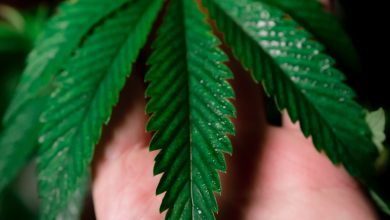What are Synthetic cannabinoids?

Synthetic cannabinoids are human-made molecules that are able to are able to bind on the identical receptors found in the human body (CB1 as well as CB2 receptors) as cannabinoids that are naturally found in the cannabis plant. Synthetic cannabinoids are often called SCBs. Some are illegal, however, many are not. If you want High Quality CBDs just Buy 6cladba online from the Best Cannabinoids Online.
A lot of SCBs have been developed to mimic their chemical structures and effect of the naturally produced THC (THC) along with cannabidiol (CBD). However, do they perform exactly the same way as THC and CBD that are derived by cannabis?
There’s an industry for semi- and synthetic cannabinoids in addition to semi-synthetic cannabis made from hemp, which aren’t subject to regulations. However, just because laws aren’t yet in force however, doesn’t mean synthetic cannabinoids aren’t encapsulated with possible risks (and advantages). Learn about the risks of synthetic cannabinoids as well as the products that contain them.
How They Work
Cannabis naturally produces an array of cannabinoids which remain in equilibrium with each other. Cannabinoids like THC are rapidly broken down by the endocannabinoid sytem (ECS) this means that an overdose from cannabis can be more of a theory rather than a real-world concern. No one has ever died from an overdose due to cannabis by itself.
Synthetic cannabinoids however are not subject to the natural balances and checks and the different chemical structure make it so that the body can’t disintegrate them as quickly.
The THC compound is an partial antagonist of the CB1 receptor. A synthetic cannabinoid, however, on contrary, could be fully agonistic and possess more potent results. One such example is HU-210which is which is a potent CB1 antagonist.
Together with the risky interactions between SCBs and receptors like serotonin dopamine as well as NMDA glutamate. Synthetic cannabis are a chemical that could be much more dangerous than the natural cannabis.
Sometimes, it’s not the SCB in itself, but the metabolites that the body breaks them down to that pose a risk. These metabolites are extremely toxic even at very low amounts. At the same time, synthetic cannabis are positive and can be used for a variety of medical purposes.
Benefits and Uses
Synthetic cannabinoids could have applications in the clinical setting under the supervision of a medical professional. The synthetic cannabinoids are created to specifically target receptors in a certain manner and with a higher level of precision than natural cannabinoids.
The cannabis plant also has many pharmacologically active components that all work together. The interaction (called”the effect of entourage”) could be advantageous in terms of safety which can help to mitigate the negative effects of a particular cannabinoid but it is also a disadvantage because it makes it difficult to focus on a particular impact.
Certain cannabinoids, especially acidic ones such as CBDA and THCA are notoriously unstable, and they quickly transform into THC or CBD once exposed to oxygen and sunlight. Synthetic forms of these acidic cannabinoids are made with greater stability of the chemical with an eye towards stability. Also, it is possible to produce semi-synthetic cannabis. Which the cannabinoid that is naturally present can be modified to enhance stability.
Certain cannabinoids, such as delta-8-THC as well as THC-O are made from hemp. It is not uncommon to observe these substances being produced through the use of hazardous substances and manufacturing processes. There isn’t much research on the consequences of these cannabinoids. Occasionally, the chemicals and pollutants that are present in the product may cause danger on their own.
Find Latest CBD Insights at 360postings.com



